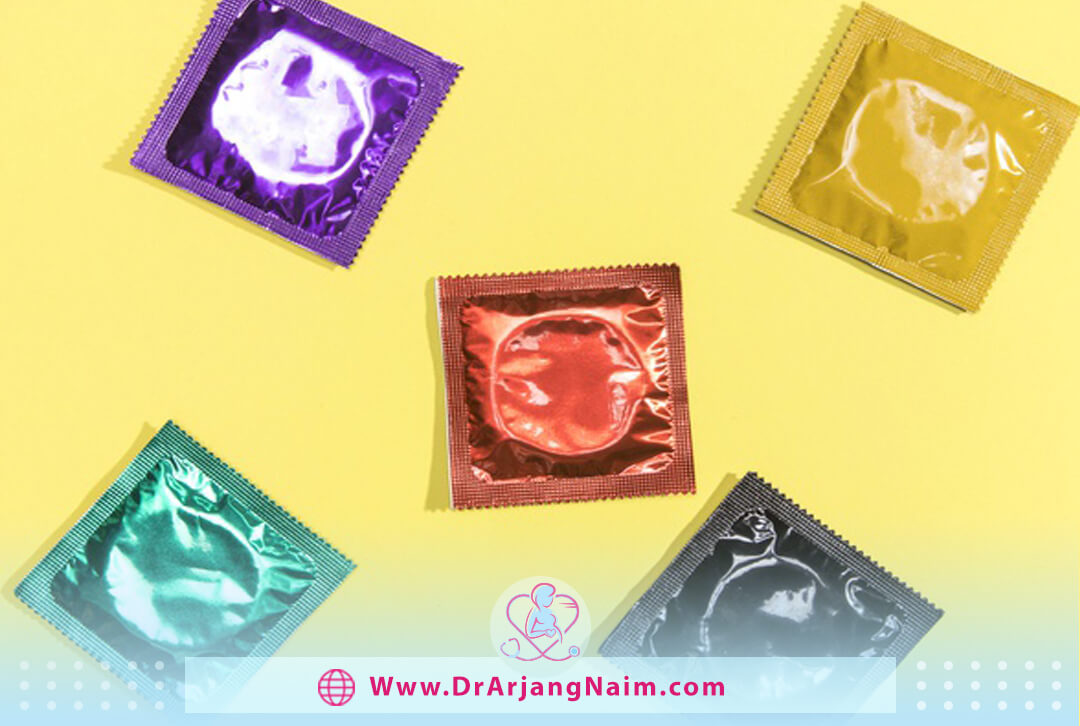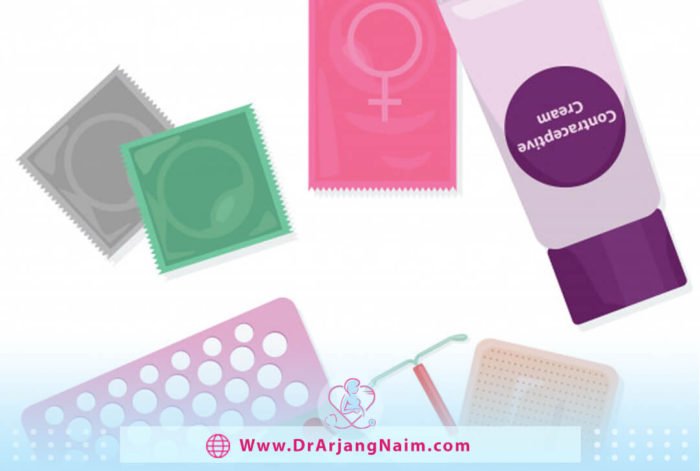Birth control options refer to tools, drugs, substances, sexual methods, or surgery to prevent pregnancy. This way, people can choose when to have a baby. There are various tools and methods for men and women to help prevent pregnancy. Each couple uses one of them according to their preferences and circumstances.
Each method of birth control has its advantages and disadvantages. To choose the right way of contraception, couples must decide according to the degree of pregnancy risk and their advantages and disadvantages. Some methods are more reliable than others. In most cases, the effectiveness of a method also depends on the accuracy with which it is used.
How to choose the best way to prevent pregnancy?
Choosing the best way to prevent pregnancy is a personal choice; only midwives or obstetricians can advise on how to prevent pregnancy. Each person is different from the other, so a very effective method for one couple may not work well for other couples.
Most birth control options are effective if used correctly, but it is always possible for one method to fail. It is good to consult a doctor and, of course, a spouse before choosing a method. Every couple should answer some questions before choosing birth control.
How important is the ease of use and convenience?
Some methods of contraception are easier to use than others. There are several options for contraception, pills used daily, rings taken monthly, a shot received quarterly, and many other methods. Couples must honestly evaluate these factors’ importance and how pregnancy control affects their lifestyle.
Will the contraceptive prevent sexually transmitted diseases?
Male and female condoms are the only contraception methods that reduce the risk of sexually transmitted infections and HIV. Remember that male condoms should never be used simultaneously with female condoms. There is also no advantage to using two condoms instead of one to prevent pregnancy.
What is the desire to have a biological child in the future?
Couples must decide whether to use a permanent or temporary contraceptive method. Whether they want to have children in the future helps them choose a method of birth control options. If you are unsure about the future, consider a temporary procedure and when choosing a method, think about how fast you can get pregnant after stopping a particular way.
How effective should the birth control method be?
Although some contraception methods are more reliable than others, no method of contraception is 100% effective. In general, permanent methods and some hormonal birth control methods are the most reliable.
Are there any health factors that may limit the choice of contraceptive methods?
If there are some health problems or other risk factors, some birth control methods may not be the safest option. You should consult a gynecologist before starting any birth control options for safety.
How much will the birth control method cost?
There are different costs associated with any contraception. When choosing a contraceptive method, should consider its costs.
Other factors influencing the choice of birth control options include:
- Age and health history
- Relationship factors include marital status, number of sexual partners, and how often have sex
- Religious beliefs
Types of birth control
In general, there are five types of contraception, including:
- Short-term birth control options
- Long-term birth control options
- One-time barrier contraception
- Permanent contraception
- Emergency contraception
Short-term birth control options
They are called short-term contraception methods because they must be used daily, weekly, or monthly. These methods include:
- Birth Control Pills: Birth control pills, also called oral contraceptives, effectively prevent pregnancy. Its types include Combination pills and Progestin-only pills. Combination pills contain synthetic forms of the hormones estrogen and progestin. Combination pills included Monophasic pills, Multiphasic pills, and Extended-cycle pills.
Progestin-only pills contain only progesterone. This type of pill is also called a mini-pill. Progestin-only pills may be the right choice for women who cannot take estrogen for health or other reasons. - Vaginal Ring: The vaginal ring is a small, flexible plastic ring inserted into the vagina to prevent pregnancy and is about two inches around. The vaginal ring prevents pregnancy by constantly releasing synthetic estrogen and progesterone, which prevent pregnancy by releasing an egg and thickening the lining of the uterus.
- Skin patch: skin patch is a hormonal contraceptive method. It is a small, square patch that looks like a plastic band, attaches to the skin, and gradually releases hormones into the body to prevent pregnancy.
- Contraceptive injection: Depo-Provera is a well-known brand for medroxyprogesterone acetate, a contraceptive injection that contains the hormone progestin. Depo-Provera is given as an injection every three months, suppressing ovulation and thickening the uterus lining.
Long-term birth control options
Long-term contraceptives can be the right choice to prevent effective and lasting pregnancy. These methods are 99% effective in preventing pregnancy.
IUD (Intrauterine Device)
An IUD is a small device inserted into the uterus to prevent pregnancy. This method is long-term, reversible, and one of the most effective methods of contraception. An IUD shaped like a “T” prevents pregnancy by preventing sperm from reaching and fertilizing eggs.
After being inserted into the uterus, the hormone IUD slowly releases a small amount of progestin to prevent sperm from reaching the egg. Like hormonal contraceptive pills, they prevent ovulation. These hormones also thicken the cervical mucosa to prevent sperm from reaching the egg. In addition to preventing pregnancy, hormonal IUDs lighten periods and reduce muscle cramps.
Menstruation may not be predictable during the first three to six months after IUD insertion. Hormonal IUDs can cause side effects like birth control pills, such as nausea, breast tenderness, headaches, mood changes, and acne. The copper IUD is wrapped in copper wire. Once in place, it works for up to 10 years.
They can also be used as emergency pregnancy control after unprotected sex. If IUDs enter after five days of unprotected sex, it is almost 100% effective in preventing pregnancy. These IUDs may have more heavy bleeding and cramping for a few months, but it gets lighter. Other side effects of copper IUD include anemia, backaches, spotting between periods, and vaginal discharge.
Both copper and hormone IUDs are over 99% effective. Copper IUDs are 99.2% effective, while hormonal IUDs are 99.8% successful. Remember that IUDs cannot prevent transmitting sexually transmitted diseases and should be used IUDs with condoms. Copper IUDs can terminate pregnancy for up to 10 years, but hormonal IUD only works for 3-5 years, depending on the type and brand. A gynecologist can help women choose the right IUD.
Birth Control Implant
Contraceptive implants are a type of hormonal pregnancy control. Sold in the United States under the Nexplanon brand. A very small plastic rod the size of a matchstick that a doctor inserts into the arm and places under the skin. Implantation slowly releases a progestin hormone called etonogestrel into the body. Progestin prevents pregnancy by preventing the release of eggs from the ovaries. It also thickens the cervical mucus to prevent sperm from entering the uterus.
Some people experience side effects from the implant, but many do not. The most common side effect is irregular menstrual bleeding. Courses may also be lighter, heavier, or stopped altogether. Other side effects may include headache, breast pain, nausea, and ovarian cysts. Side effects are usually rarely serious and go away after a few months.
Implants should be removed after three years. If desired, it can be removed earlier. This long-term birth control method has one of the highest levels of effectiveness of contraceptive methods that are safe from unwanted pregnancy for three years. Fertility returns when the implant is removed and is suitable for women who cannot use estrogen-containing pregnancy control.
One-time barrier contraception

One-time barrier contraceptives do not require a prescription and are available in many stores or online.
Condoms
A condom is a thin, fitted tube a man wears on his penis during sex, or a woman inserts it into her vagina before sex. Condoms can help prevent pregnancy and STDs.
If used correctly, male condoms are about 98% effective, and Female condoms are about 95% effective. There are different types of male condoms, including latex, plastic, lambskin, Lubricated, Spermicide, and Textured condoms. There is only one type of female condom that the FDA has approved for use in the United States.
Sponges
The contraceptive sponge is a birth control option that prevents sperm from entering the uterus. It is soft and disc-shaped and made of polyurethane flooring. Contraceptive sponges contain spermicides that kill sperms. Before having sex, insert the sponge deep into the vagina to cover the cervix. Vaginal muscles hold it in place. The contraceptive sponge has a strap to make it easier to remove.
Contraceptive sponges can be obtained without a prescription, and be careful not to prevent the transmission of sexually transmitted diseases. Before using the contraceptive sponge, the product instructions should be read carefully or talked to by your healthcare provider.
Remove the sponge from the package, moisten it with about two tablespoons of clean water, and gently squeeze until soft. The water activates the spermicide inside the contraceptive sponge. Insert the contraceptive sponge.
Put the contraceptive sponge in place for at least six hours after sex. However, to reduce the risk of infection, do not leave it for more than 24 hours.
Diaphragms
Women use the diaphragm to control pregnancy. The diaphragm is flexible and made of silicone or latex that goes into the vagina to prevent sperm from reaching the egg. It has very few risks and can be up to 94% effective. You can put it in the vagina up to 6 hours before sexual intercourse; after that, you should leave it for at least 6 hours. Once in place, you can have sex more than once, but you must use a spermicide each time.
Cervical caps
The cervical cap is a contraceptive device that prevents sperm from entering the uterus. It is a deep, reusable silicone cup inserted into the vagina and placed firmly on the cervix. The cervical cap is held by suction and has a strap to help remove it. The cervical cap is effective in preventing pregnancy only if used with spermicide. Cervical caps can enter hours before sexual intercourse and stay in place for up to 48 hours.
Spermicide
Spermicide is a chemical that prevents pregnancy by destroying sperm so they can not fertilize the egg. Prepare them as foam, jelly, suppository, tablet, or dissolvable film. Spermicides can be used alone or in combination with other methods. Insert the spermicide deep into the vagina and Wait 10-15 minutes before having sex. Do not wait more than 30-60 minutes for sex, and Leave it to rest for at least 6 hours after sex.
Permanent contraception
Contraceptive methods are 100% permanent methods. They are a great option for people who are sure they do not want to have children in the future. Recovery time from these methods usually takes only a few days. Sexual function will not be affected if you choose to close the tube; you will still have a period.
Nothing will change in daily life except that you can not get pregnant. This makes permanent contraception one of the easiest contraceptive options, but only if there is a certainty that there is no desire to have a child in the future. Reversal of tubal ligation or vasectomy is possible, but there is no guarantee that fertility will return.
Tubal ligation
Tube closure or tube sterilization is a kind of permanent control in pregnancy. During a tubal ligation, the fallopian tubes are cut, closed, or blocked to prevent permanent pregnancy. Tube closure or tube sterilization is a kind of permanent control in pregnancy. During a tubal ligation, the fallopian tubes are cut, closed, or blocked to prevent permanent pregnancy. Closing the tube prevents the egg from moving from the ovary through the fallopian tubes and prevents sperm from moving from the fallopian tubes to the egg.
This method does not affect the menstrual cycle.
Vasectomy
A vasectomy is a surgical procedure performed to prevent pregnancy. This involves cutting the vas deferens (efferent vessels) and is used to block the tubes that carry sperm from the testicles. There is one efferent vein for each testicle. If a man performs a vasectomy, he cannot conceive a woman.
Sperm are made in two testicles that are inside the scrotum. Sperm are stored in a tube called the epididymis that attaches to each testicle. When a man ejaculates, sperm travel through the epidermis through the efferent vessels and combine with semen to form semen. The semen then moves into the urethra and then out of the penis.
Before a vasectomy, semen contains sperm, but there will be no sperm in the semen after that. A man’s testicles will produce less sperm over time, and his body will absorb the sperm produced. A vasectomy will usually be performed in a doctor’s office. Sometimes, the doctor may decide to operate an outpatient surgery center or hospital.
Emergency contraception
Emergency contraception is a type of pregnancy control used by women who have not had unprotected sex or have not used contraception. There are two types of emergency contraception include:
- Pill form: There are three types of emergency contraception in pill form sold with and without a prescription. Pills containing the hormone called levonorgestrel, birth control pills, and an emergency contraceptive pill called ulipristal. Emergency contraception can prevent pregnancy by preventing the temporary release of eggs, stopping fertilization, or implanting a fertilized egg in the uterus.
- IUD: The copper IUD can be used as an emergency contraceptive if placed within five days of unprotected sex. A healthcare provider must insert the IUD. Placing an emergency IUD reduces the risk of pregnancy by up to 99%.
All forms of emergency contraception can significantly reduce the risk of pregnancy but should be taken immediately. The more emergency contraception is used, the more successful contraception will be.
Side effects of birth control

Long-term hormonal contraception may depend on the person’s risk factors, age, and medical history. Hormonal methods of contraception contain artificial progesterone or estrogen and progesterone. They affect hormone levels in the body, so many people experience side effects shortly after taking them. Adjusting the body to hormones makes some side effects disappear within a few months. Possible short-term side effects of birth control include:
- Bleeding between periods, or spotting
- Headaches
- Nausea
- Mood swings
- Weight gain
- Breast tenderness
Many people use hormonal contraceptives to prevent pregnancy. However, others take hormonal contraceptives to control long-term medical conditions. Conditions include heavy or painful periods, endometriosis, and menopausal symptoms. Doctors recommend using pills for these conditions, so taking them is not a problem. A doctor can advise people about the safety and risks of long-term contraception based on their medical history. There are several possible factors and side effects that should be considered when using them for a long time, the most important of which are:
- Cancer
- Blood clots
Additional questions
- What is the safest birth control?
The birth control types that best prevent pregnancy are implants and IUDs. They are also the most convenient and error-free methods to use.
2. What are natural birth control methods?
Natural family planning (or “fertility awareness”) is a birth control method in which a woman monitors and records various fertility signals throughout her menstrual cycle to determine when pregnancy is most likely.
3. What does the birth control pill do to your body?
The pill thickens the mucus around the cervix, making it difficult for sperm to enter the uterus and reach any eggs that may have been released. The hormones in the pill can also sometimes affect the lining of the uterus, making it difficult for the egg to attach to the uterine wall.
4. What is a major disadvantage of using an IUD?
They do not protect against sexually transmitted infections (STIs), and insertion can be painful.
5. Do condoms 100% protect?
No condom will 100% prevent pregnancy or sexually transmitted diseases (STDs). To better protect against pregnancy, many couples use condoms and other methods of birth control, such as birth control pills or an IUD.
The bottom line
There is a lot of variety in contraceptive methods, so the couple’s condition should be thoroughly examined to suggest the best way for them. The best way to prevent pregnancy is one that is both healthy and comfortable. Do not forget that this is a personal choice, and others’ success is not necessarily successful for you. Dr. Arjang Naim, MD, suggests the best method for couples by thoroughly examining their condition.
References
https://www.webmd.com/sex/birth-control/features/long-term-birth-control-new-implants-patches
https://www.webmd.com/sex/birth-control/birth-control-spermicides
https://www.webmd.com/sex/birth-control/diaphragm-birth-control
https://www.mayoclinic.org/tests-procedures/depo-provera/about/pac-20392204
https://www.healthline.com/health/birth-control-pills#types
https://www.healthline.com/health/birth-control/iud-types
https://www.webmd.com/sex/birth-control/emergency-contraception
https://www.medicalnewstoday.com/articles/322762#contraception-options




